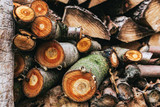Royal Androgenic Pycnogenol & testosterone Pine Pollen

The Royal Androgenic Herb: Pine Pollen
Androgenic herbs, as I’m sure you already know, are herbs (and other nutritional supplements) which increase blood androgen levels, including the four main androgens: Androsterone, androstenedione, dehydroepiandrosterone (DHEA), and testosterone.
At RAW Forest Foods, we break the androgenic herbs into three classes, because different herbs work in different ways to increase androgen levels in the body. These three classes are the supplementors, producers, and the enhancers. Of these three classes, Pine Pollen is the royal androgenic herb and the key androgenic supplementors.
Pine Pollen is considered the royal androgenic herb because no other herb known contains androgen hormones in the same levels as the pollen from the Pinus massoniana pine tree. Plants produce their own unique plant hormones called sterols, and occasionally these plants sterols are close enough to human hormones to have a similar effect on the body as the endogenous hormones produced by the body. While there is very little media attention played to phyto-androgenic compounds, everyone knows about the phytoestrogen compounds found in soy and their estrogenic effects on the body (such as soy, yams, and hops). As the royal androgenic herb, pine pollen contains plant versions of androsterone, androstenedione, dehydroepiandrosterone (DHEA), and testosterone, which act upon the body to raise our own levels of these hormones. For most people, these effects are immediate.
Below is the list of benefits when consuming Pine Pollen daily:
- Strengthen the immune system
- Increases energy and vitality
- Increases testosterone level
- Promotes healthier skin and hair
- Balances out androgen and estrogen level
- Raises libido and sex drive
- Improves heart health
- Lowers cholesterol levels
- Reduces an enlarged prostate
- Antioxidant, Anti-aging, and Anti-Inflammatory
Waning Testosterone: Age and Environment
As men age, the level of the male sex hormone gradually increases and starts to drop somewhere around thirty to forty years of age. By age fifty, testosterone levels are absolutely minimal. Some of the well known effects of lowered testosterone in men include:
- Decreased energy;
- Decreased flexibility;
- Decreased libido or interest in sex;
- Depression;
- Erectile dysfunction with loss of erections;
- High cholesterol and triglycerides;
- Higher blood sugars;
- Inability to sleep;
- Infertility;
- Loss of muscle mass;
- Muscle weakness and aches;
- Thinning of bones or bone loss.
Compounding this natural progression is the polluted environment we live in which seems to exacerbate the reduction in the androgen hormones, as noted by the wide spread and rampant reduction in testosterone levels and sperm levels since WWII. Pine pollen has been used as a supplemental anti-aging food in certain parts of the world, most notably in regions of China and Korea; however, until recently it was unknown the exact effects pine pollen was having on the body. The apparent effects were obvious, which is why people have been supplementing their diets with pine pollen for thousands of years, but only recently has the understanding of the compounds found pine pollen became known, and the true depth of the remarkable plant-medicine has been revealed.
Historical Uses of the Pine Tree as Food and Medicine
Pine Pollen has been used as a food and medicine in China for Thousands of Years. Wherever the pine tree grows, you can find indigenous (past or present) people who have used different parts of the plant. In North America, pine needles have been used historically and are still used today as a rich source of vitamin c. As a coniferous, evergreen tree, pine needles are available year round while other vitamin c containing plants are out of season. In fact, folklore tells that the British actually stole the vitamin c to scurvy connection from indigenous New England tribes who used pine needles to prevent scurvy during the long winter months.
Additionally, native and early European inhabitants of North America used the inner bark of the pine tree as a supplemental food, when other vegetable foods were scarce. Like pine needles, the bark of the pine tree is experiencing a recurrence today as food. Medicinally, the outer bark of the pine tree is used to produce pycnogenol, a powerful anti-oxidant that is used to protect against arthritis, diabetes, cancer, heart disease, circulation issues, improved memory, reduced stress, better joint flexibility, and decreased inflammation.
It is important to understand the wide use and the powerful effects of the use of different parts of the pine tree to fully understand how broad and comprehensive the effects from pine pollen are. While pine pollen does supplement testosterone and other androgen hormones, pine pollen also contains 100+ other active compounds which work to nourish and enhance the body, acting as a premier anti-aging food.

Pine Pollen: Much more than Just Testosterone
Anti-aging compound profile of pine pollen: plant sterols, nucleic acids, unsaturated fatty acids, oleic acid, alpha linolenic acid (ala), lignin, methylsulfonylmethane (msm), fiber, living enzymes & co-enzymes, flavonoids, monosaccharides & polysaccharides, superoxide dismutase (sod), and other powerful antioxidants.
Androgen profile of pine pollen: androsterone, androstenedione, dehydroepiandrosterone (DHEA), and testosterone.
Vitamin profile of pine pollen: vitamin a, b-carotene, vitamin b1, vitamin b2, vitamin b3, vitamin b6, folic acid, vitamin d, and vitamin e.
Amino acid profile of pine pollen: alanine, arginine, aspartic acid, cysteine, glutamic acid, glycine, isoleucine, leucine, lysine, methionine, phenylalanie, proline, serine, threonine, tryptophan, tyrosine, and tyrosine.
Mineral profile of pine pollen: calcium, copper, iron, manganese, magnesium, molybdenum, phosphor, potassium, selenium, silicon, sodium, and zinc.
Androgenic Herbs: Supplementors
Of the three classes of androgenic herbs, pine pollen falls within the supplementors class: those herbs that raise testosterone because they contain testosterone. As discussed above, pine pollen contains phytosterols (plant hormones) that are almost bio-identical to human hormones. Of these hormone, pine pollen contains androsterone, androstenedione, dehydroepiandrosterone (DHEA), and testosterone. As with all three classes of androgenic herbs, there are advantages and disadvantages of using pine pollen to increase testosterone levels.
Advantages:
Quick. Because the androgen hormones are present in Pine Pollen, once digested or absorbed, it raises testosterone levels almost immediately. The alcohol based extracts of Pine Pollen are the most efficient at quickly elevating testosterone.
Minimal energy costs. Because Pine Pollen supplements the body, the effects of elevated male sex hormones can be achieved without otherwise stressing the body to produce more androgen hormones.
Men and Women. Men and women alike suffer from androgen deficiencies, but women have a lower capacity to produce androgens because the majority of androgens are produced in the testes. Pine Pollen, containing the androgen hormones, is able to raise androgen levels in women and in men whose main source of testosterone has been compromised.
Disadvantages:
Lack of engagement. The endocrine system produces hormones through a network of glands. Glands stay healthy when they stay active. Because Pine Pollen supplements with androgen hormones, it does not engage the body to produce the hormones (other androgenic herbs do, see Cistanche Tubulosa).
Negative feedback. Most hormones in the body, including all the sex hormones, are regulated through negative feedback. This mechanism works like the thermostat in a house, when the temperature drops the heat turn on until the set temperature is reached. So when testosterone levels naturally dip, the body boosts production until the set level is reached. Pine pollen does not help change the set level (other androgenic herbs do, see Tongkat Ali).
Estrogen and aromatization. Testosterone is converted to harmful estrogen compounds, and safeguards should be taken to minimize how much testosterone is converted to these compounds. Pile pollen does not reduce this conversion (other herbs do, see Nettle Root).
In Conclusion:
At RAW Forest Foods, we consider pine pollen to be the royal androgenic herb. Not only does it contain androsterone, androstenedione, dehydroepiandrosterone (DHEA), and testosterone, but pine pollen also contains many, many nutrients and anti-aging compounds (and I suspect as popularity in pine pollen increases, more and more anti-aging compounds will be discovered).
Like many parts of the pine tree, pine pollen has been historically used as a food and as a medicine, which speaks to its strong effects as well as its relative safety. We use pine pollen in all its forms: raw, tincture, and powdered extract.
Recent Posts
Understanding Our Forest Aurum Pine Pollen Nectar Tincture
Unlocking the Potency of Pine Pollen Forest Aurum Pine Pollen Nectar Tincture represents the c...
Unlocking the Secrets of Tongkat Ali: Tradition, Authenticity, and the Power of Natural Healing
Tongkat Ali: A Beacon of Authenticity in the World of Herbal Medicine In our quest to recover o...
Building Product Stacks and Cycles
Unlocking the Intricacies of Stacking, Combining, and Cycling Herbs and Products for Optimum Benefit...
Unlocking the Vital Role of Estradiol in Male Sexual Health: Looking Beyond Testosterone
Exploring the Complex Interplay of Estradiol and Androgens in Male Sexual HealthBeyond the Shadows o...
Witches' Qi Elixir: Eleven Cauldron Flavors
All Hallows Evening: Celebrating Growth, Death, Renewal, and the Mystical Cycles Eleven Cauldron...
Unstandardized Extracts
A Dedication to Excellence Over Quantity In the upcoming week, we are thrilled to reintroduce a...






